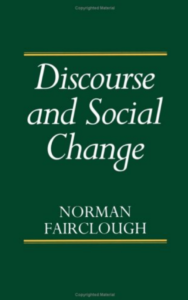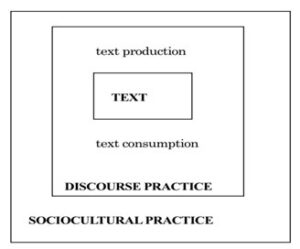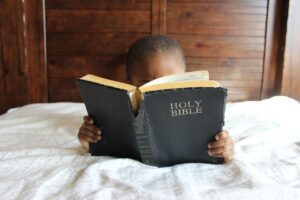 |
| Source: Fortune books and library |
The relationship between these three dimensions can be illustrated in the figure below.
Thank you for reading this post, don't forget to subscribe! |
| Source; Journal of Multilingual Research |
Figure 1. A Framework for Critical Discourse Analysis of ‘Communicative Event’ (Fairclough, 1995)
In the framework for CDA shown above, Fairclough (1995), provides a clear distinction between the three main elements of the communicative event:
1. Text
Text is the first step in the three-dimensional framework of CDA. The text covers both the written and spoken discourse. For Fairclough (1995b), ‘Texts’ “may be written or oral, and oral texts may be just spoken (radio) or spoken and visual (television)” (p.57). The analysis of the text consists of the study of the language structures produced in a discursive event. It is first based on the analysis of vocabulary, semantics, cohesion, and grammar, etc…However, the analysis of the text requires also the analysis of the stages of text production and perception that are grouped into the discourse practice.
2. Discourse Practice
Discourse Practice consists of three essential steps that need to be carefully and holistically analyzed: text production, text distribution, and finally text consumption. In the process of text production, the writer encodes certain ideas and ideologies in the text. Proceeding into that, the audience is well identified. Whereas in the level of text interpretation, the audience decodes the meaning according to their beliefs, knowledge, and previous experience. The text, thus, might shape or reshape the audience’s views and beliefs.
3. Sociocultural Practice
The last level of the communicative event of CDA is the sociocultural practice. By ‘sociocultural practice’, Fairclough (1995b) “means the social and cultural goings-on which the communicative event is a part of” (p. 57). The analysis of sociocultural practice is based on the examination of what is happening in a particular sociocultural framework. It explores the ways in which discourses operate in various domains of society and in relation to power and dominance. Sociocultural Practice requires the combination of Discourse Practice with the Text.
Going a step further, Fairclough (1989) identifies three components of discourse as a text, interaction, and context:
· Description: it is the level that is concerned mainly with the formal properties of the text;
· Interpretation: it is concerned with the relationship between the interactions with the text. The latter is seen as the end product of the process of text production and as a resource in the process of text interpretation;
· Explanation: It deals with the relationship between social context and interaction with the social determination of the processes of production and interpretation, and their social effects.(p. 26)
Thus, ‘Text’ is part of discourse analysis which is seen as a product and not as a process. Additionally, Fairclough (1989) argues that the three elements mentioned above have different ways of analysis. In other words, the process of explanation is quite different from that of interpretation and description in the level of form. Explanation requires a micro-analysis, whereas interpretation and description are globed in the macro-analysis. To sum up, Fairclough presents three fundamental stages in the investigation of any communicative event of CDA from the sociological and linguistic perspectives. On the other hand, Van Dijk’s framework is quite different since the focus is on the cognitive aspects of the language user in a specific social context.
If you think these tips are useful, please “SHARE AND CARE”
References to consult
Belmekki, N. (2013). Power, ideology and context: a critical discourse analysis an analysis of Benkirane’s political speech. Germany: LAP LAMBERT Academic Publishing.
Fairclough, N. (1989). Language and power. London: Longman.
Fairclough, N. (1992). Discourse and social change. Cambridge, UK: Polity Press.
Fairclough, N. (2003). Analyzing discourse: Textual analysis for social research. London: Routledge.
Fairclough, N. (1995a). Critical discourse analysis: The critical study of language. Harlow, UK: Longman.
Fairclough, N. (1995b). Media Discourse. London: Arnold
Fairclough, N. (n.d.). Norman Fairclough. Retrieved August 04, 2016, from https://lancaster.academia.edu/NormanFairclough








